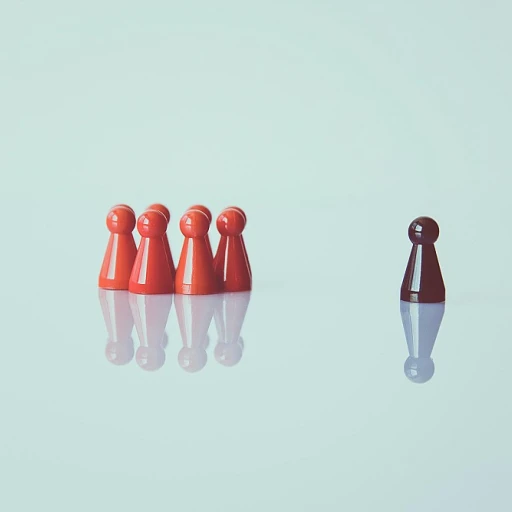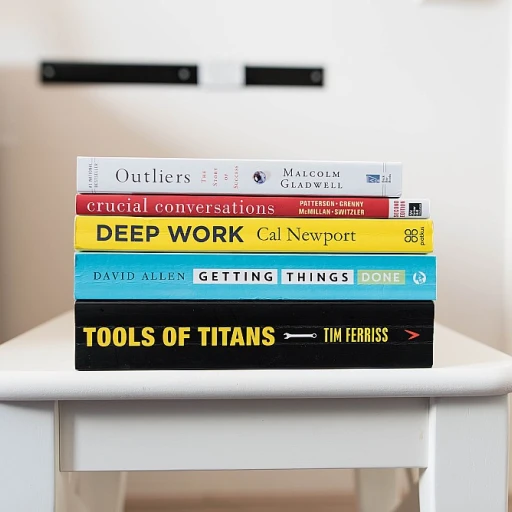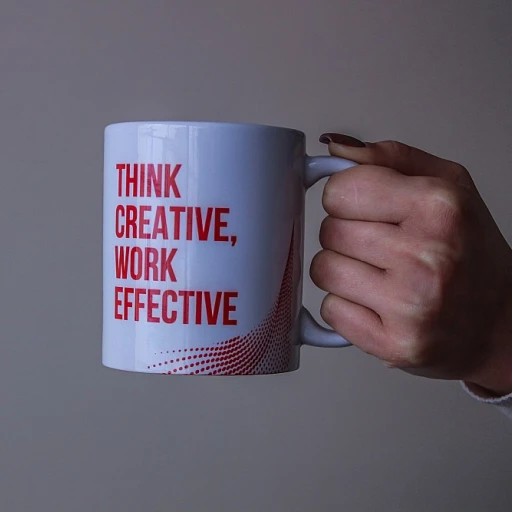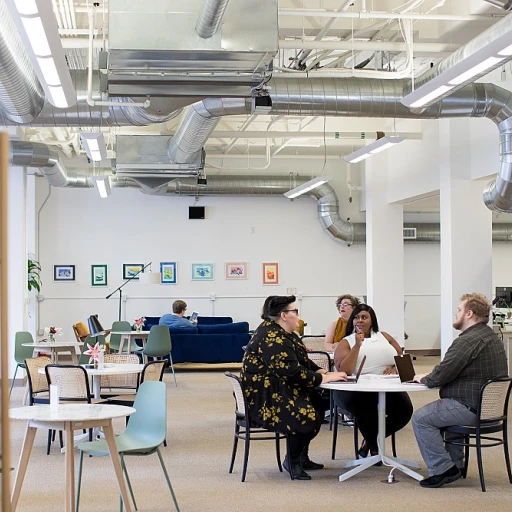The importance of digital collections in continuous learning
Digital Collections as a Pillar of Continuous Learning
In today's fast-paced world, continuous learning has become an essential part of personal and professional development. Digital collections, like those found in the Florida Holocaust Museum, play a crucial role in this ongoing educational journey. These collections offer a wealth of information that can be accessed from anywhere, making them invaluable resources for learners across the globe.
The Florida Holocaust Museum's digital archives provide a unique opportunity to explore the history and experiences of Holocaust survivors. By visiting the museum's site, individuals can delve into a comprehensive library of oral histories, special collections, and virtual exhibitions. These resources not only preserve the memory of the Holocaust but also serve as a powerful tool for education and reflection.
Digital collections allow for a deeper understanding of historical events by offering access to a wide range of materials, including victims' names, testimonies, and artifacts. This accessibility is particularly important for those who cannot visit the museum in person, such as students and researchers from the United Kingdom, the United States, or even as far as Los Angeles.
Moreover, the integration of digital archives into educational curriculums enhances the learning experience by providing diverse perspectives and fostering critical thinking. As we explore the challenges and future trends in digital learning resources, it's clear that digital collections will continue to be a cornerstone of effective and engaging education.
For those interested in safeguarding their ideas and understanding intellectual property risks, exploring the importance of digital collections in continuous learning can provide valuable insights. Learn more about these topics by visiting safeguarding your ideas.
Navigating the Florida Holocaust Museum's digital archives
Discovering Historical Treasures in Digital Archives
Exploring the Florida Holocaust Museum's digital archives is a journey into a vast universe of history, dedicated to preserving the memory of the Holocaust and educating future generations. As one navigates through these collections, it becomes evident how integral such digital resources are in continuous learning and understanding complex historical narratives.
The museum's online resources include extensive digital libraries and virtual exhibitions, which offer access to special collections and oral history recordings. These resources provide invaluable insights into the lives of Holocaust survivors and victims, offering a profound look at this pivotal moment in Jewish history.
In an era where access to information is unprecedented, the role of digital archives extends beyond simple preservation. Tools and resources, such as those available in the Florida Holocaust Museum's collections, aid students, educators, and history enthusiasts worldwide in their pursuit of knowledge.
Whether you are a university student conducting research, an educator designing comprehensive lesson plans, or someone with a personal interest in this critical chapter of history, these archives allow for an in-depth exploration of past events. By leveraging the museum's resources, which are as rich and varied as any traditional library, individuals gain a more nuanced understanding of Holocaust education and history.
For researchers and educators looking to deepen their understanding, exploring approaches to safeguarding these digital resources is crucial.
Understanding intellectual property risks ensures that the information remains both accessible and secure for future generations.
The journey through the museum's digital archives is a reminder of the power of technology and the internet in not just preserving history, but making it alive and relevant in the continuous process of learning and education.
Integrating historical resources into modern learning
Incorporating Historical Resources into Educational Practices
In today's fast-paced world, integrating historical resources from museums, especially collections like those found in the Florida Holocaust Museum, significantly enriches modern learning experiences. With the vast resources available at your fingertips, it’s about transforming the past into a living part of your educational journey.
Educators and students, whether part of a university or a high school, can leverage these digital archives to accentuate their curriculum. By accessing the museum’s extensive virtual exhibitions, libraries, and oral history collections, learners can immerse themselves in history as if they were paying a physical visit to these significant sites. This method of integrating historical content helps anchor modern-day lessons in the rich tapestry of the past, bringing context and depth to topics like the holocaust, Jewish memorials, and other critical pieces of history.
A practical application might be using specific digital resources, such as victims' names and survivor testimonies, to foster discussions and develop empathy. Visiting the site online provides a lens into the vastness and complexity of history, while also encouraging students to engage in critical thinking. This learning can surpass traditional methods by offering a more interactive experience that encourages active participation and reflection.
Part of the challenge, however, is ensuring these resources are easily accessible and engaging. Tools such as virtual tours and interactive exhibitions make it feasible to incorporate into classroom settings or independent studies. Collaborative projects that focus on creating presentations or essays can further enhance the learning experience, especially when students can interact directly with the Holocaust Memorial Museum’s resources online.
By using digital archives as a multifaceted learning tool, educators not only preserve history but also ensure that its lessons are continuously engaging and relevant. This transformative approach supports a richer, more inclusive educational narrative and aligns with best practices in
understanding the value of HRIP certification in continuous learning, offering frameworks and tools for learners at various levels.
Challenges in digital archiving and learning
Overcoming Obstacles in Digital Archiving
The digital transformation of archives presents a new world of opportunities for education, especially in the context of significant historical events such as the Holocaust. However, this transition does come with its own set of challenges that educators, researchers, and institutions must navigate with care.
One major hurdle is ensuring the authenticity and accuracy of digital collections. As we transition historical resources to digital formats, it's crucial to maintain the integrity of these materials. The Florida Holocaust Museum, like many other institutions across the United States and the United Kingdom, diligently works to preserve the original context and authenticity of its collections. This task often involves consulting with experts in Holocaust history, including survivors and historians, to verify the accuracy of digital content available online.
Another challenge is accessibility. Although digital archives expand reach, not all visitors can easily access these resources. Variability in technology infrastructure and digital literacy levels can hinder the site's accessibility. Museums like the Florida Holocaust Museum strive to offer user-friendly platforms and virtual exhibitions to encourage more inclusive access. These efforts ensure that stories, such as those of Holocaust survivors and the victims' names memorialized, remain accessible to students, educators, and the general public.
Moreover, technical issues such as data preservation and storage capacity act as significant obstacles. Maintaining vast amounts of digital data requires advanced technology and continuous updates to prevent data loss. Institutions must often partner with technology providers to improve their digital archiving and library systems.
Additionally, securing funding and resources for digital archiving projects remains a persistent challenge. Many museums and memorial centers, including those dedicated to the Holocaust, depend on donations, grants, and governmental support to develop and maintain their digital collections. In many cases, local libraries and educational institutions, such as universities, collaborate to pool resources in support of these digital efforts.
As the field of digital archiving evolves, museums and education centers must find innovative ways to address these challenges. Through collaborative efforts, technological advancements, and a commitment to preserving history, institutions can continue to provide vital educational resources to future generations. The commitment to digital preservation ensures that the lessons of the past, from the stories of Anne Frank to the archives of Yad Vashem, remain available for all who seek to learn and understand the complex history of the Holocaust.
The role of technology in preserving history
The Intersection of Technology and Preservation
Exploring the digital archives of the Florida Holocaust Museum reveals the critical role technology plays in the preservation of history. As we gain access to virtual exhibitions and vast collections like those of the Florida Holocaust Museum, technology becomes a pivotal bridge between past and present.
From the comfort of one’s own home, a visitor can explore the library of the Holocaust Memorial Museum, uncovering special collections and oral history accounts that paint a vivid picture of
Holocaust survivors. This access ensures that information which once rested in physical archives is now interactive and tangible to a global audience.
That said, preserving these historical resources is not without challenges. Converting physical documents into digital format demands expertise, dedication, and ongoing maintenance to keep servers and databases secure and up to date. Furthermore, the process must protect sensitive information, like victims' names, while making history accessible to those conducting Holocaust education and research.
Despite these challenges, museums and memorial centers around the world, including the Florida Holocaust Museum, continue to evolve. They contribute to a unified effort across the United States and beyond, ensuring that the stories of the past remain at the forefront of current and future generations' consciousness.
In conclusion, technology not only enhances our capacity to document and store historical events, like those experienced during the Holocaust, but it also transforms how we access and engage with these powerful narratives. This evolution shapes our understanding, ensuring history remains a vital component of modern education.
Future trends in digital learning resources
Anticipating Advances in Digital Educational Resources
The advancements in technology have continually reshaped the landscape of educational resources, leading to the birth of robust digital collections like those housed by the Florida Holocaust Museum. These developments indicate a promising future for digital learning, emphasizing the need to adopt innovative methods for preserving and teaching history.
Artificial intelligence (AI) and machine learning are anticipated to play a crucial role in enhancing the accessibility and interactivity of digital archives. AI can facilitate the curation of personalized learning experiences, making history more engaging by adapting content to individual preferences or knowledge levels. These adaptations would allow museums and educational centers to provide richer narratives and deeper understandings of historical events, such as those of the Holocaust memorial museum.
Moreover, virtual and augmented reality technologies offer transformative potentials for education. They enable users to experience immersive virtual exhibitions, such as a virtual visit to the site Holocaust without leaving their homes. This can augment understanding and empathy, providing a fuller exploration of complex histories like the Holocaust genocide or visits to the Jewish memorial.
Collaborative platforms might emerge, allowing educators, historians, and learners to unite through shared experiences across the globe. Universities and libraries can enrich their special collections by linking their digital archives through a networked system, exchanging documents, oral histories, and exhibitions with institutions such as Yad Vashem and other memorial museums in the United States and beyond.
However, the digital revolution in education is not without its challenges. Addressing issues such as data security, the integrity of historical materials, and the constant need for technological upgrades remains paramount. As centers like the Florida Holocaust and others continue to evolve their digital collections, maintaining balance between technological innovation and the core mission of trustworthy holocaust education is essential.
In summary, the integration of advanced technologies in digital learning resources signals a bright future for museums and educational sites. It promises to transform how learners worldwide perceive and engage with history, ensuring that the stories of holocaust survivors and victims' names endure for future generations to learn and reflect upon.













